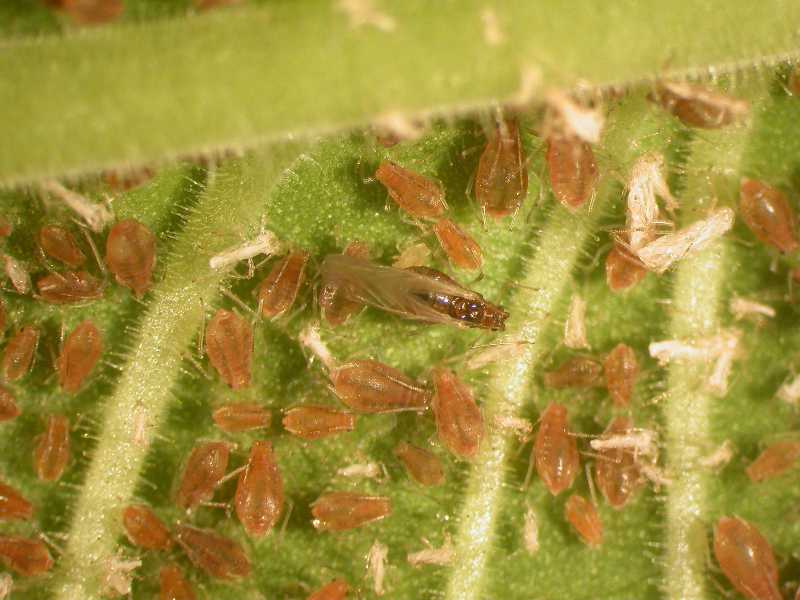 |
Aphids (Hemiptera) on underside of leaf including one adult with wings, nymphs in various stages of maturity and white cast skins |
Aphids are a very large and diverse group of insects that plague the garden especially during the beginning and end of the growing season. At least 4,000 aphid species have been identified; variations in color, size, and appearance make it impossible to generalize.
Symptoms and Diagnosis
Aphid damage may appear as pale yellow spots on leaves, leaves that are curled, puckered, or stunted, and/or distorted blossoms. Look for aphids at the beginning of the growing season. They should be especially abundant on stems and buds where nitrogen concentrations are higher. Aphids multiply more rapidly with high nitrogen levels. Another sign to look for is a sooty black layer on the leaves. Because aphids suck more plant sap than they can use, they exude honeydew onto leaf surfaces. Envied by honeybees and ants, this honeydew substance is very sweet and molds quickly.
Life Cycle
Females lay eggs toward the end of the growing season in the bark or bud scales of their favorite plant. When the eggs hatch the following spring, the nymphs are all female and are called "stem mothers". These females will give live birth to daughters without mating. Toward the end of the growing season, males are produced, mating occurs, and the eggs will again overwinter in the plant material.
Integrated Pest Management Strategies
1. Through good horticultural practices, aphids can be minimized. One step is to control the amount of nitrogen added to the garden. By using slowrelease fertilizers such as ammonium or urea-based fertilizers, compost, decomposed manure, fish emulsion, or liquid seaweed, you slow the rate at which the aphids can reproduce. Another step is to prune moderately in winter and early spring, saving the heavy pruning for midgrowing season. This prevents the aphids from destroying fresh growth in early spring. The last step is to encourage a continuum of flowers that will attract the aphids’ natural predators— ladybugs and praying mantis.
2. Try spraying the aphids off the plants with plain water, or remove them by hand with a cloth.
3. Insecticidal soap can be used, but in moderation, as it will kill beneficial insects as well as the aphids.
4. Insecticidal baits that contain boric acid can be used to control the ants, which have a symbiotic relationship with the aphids. The ants protect the aphids and get the honeydew that they ooze in return. Use caution; boric acid is toxic to people and animals. Ant barriers placed at the base of infested plants is another way to discourage ants and allow predators to attack the aphid population.
5. Silica Aerogel/Pyrethrin is a product that will dissolve the cuticle layer on the insect causing it to dehydrate and die.
6. Use chemical insecticides. Pesticides registered for use include carbaryl (Sevin), disulfoton (Disyston), malathion, bifenthrin, imidacloprid, permethrin, petroleum oil, and pyrethrins.
Organic Strategies
Strategies 1 and 2 are strictly organic approaches. For an organic approach to Strategies 3, 5, and 6, consult the Organic Materials Review Institute (OMRI™) for appropriate insecticidal soap, pyrethrin, and pyrethrum products.
More images:
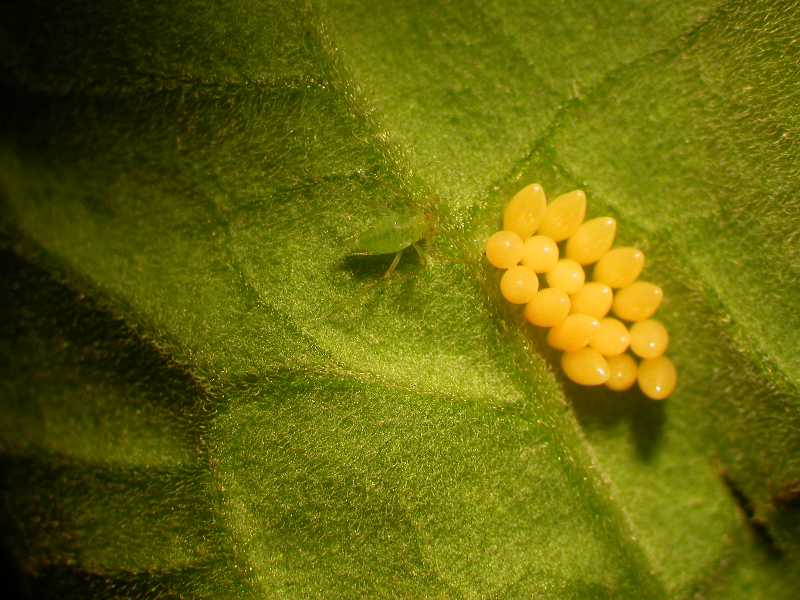 |
| Aphid (Hemiptera) and yellow lady beetle eggs (Coleoptera) on a tomato leaf (Lycopersicon) |
|
 |
| Close-up of aphid (Hemiptera) and yellow lady beetle eggs (Coleoptera) on a tomato leaf (Lycopersicon) |
|
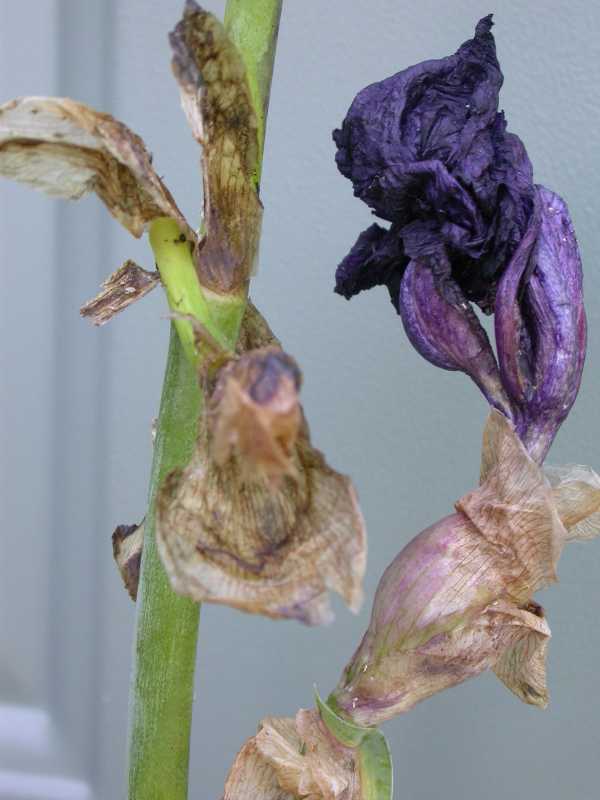 |
| The flowers of this iris never opened (bud blast); pulling back the sheath revealed aphids (Hemiptera) and a maggot (Diptera), possibly a predatory syrphid fly maggot |
|
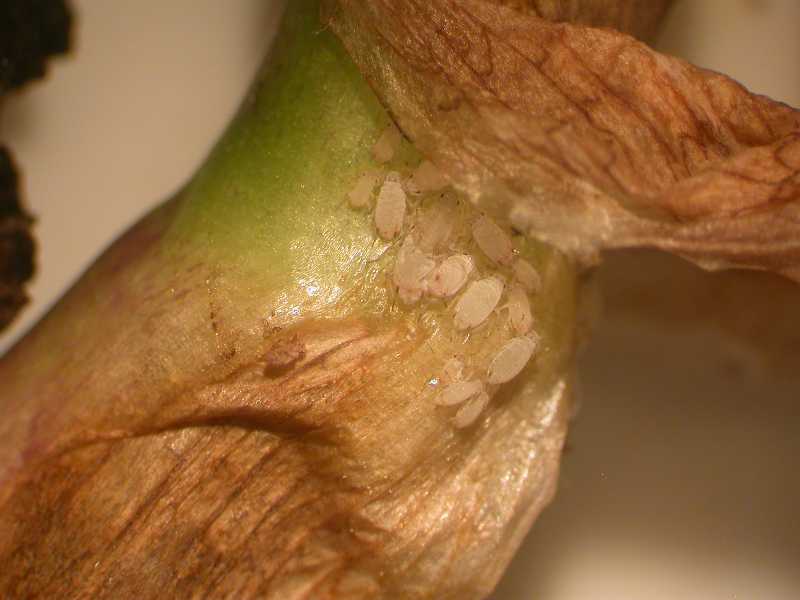 |
| Pulling back the flower sheath of this iris (Iris) revealed aphids (Hemiptera) |
|
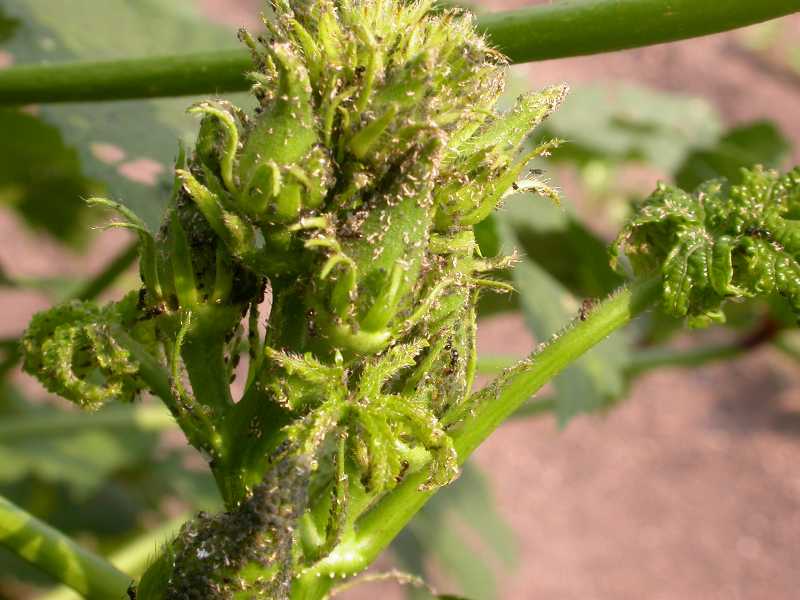 |
| Heavy infestation of aphids (Hemiptera) on flower buds of okra (Abelmoschus esculentus 'Annie Oakley' II); note, slate-colored aphids and white cast skins |
|
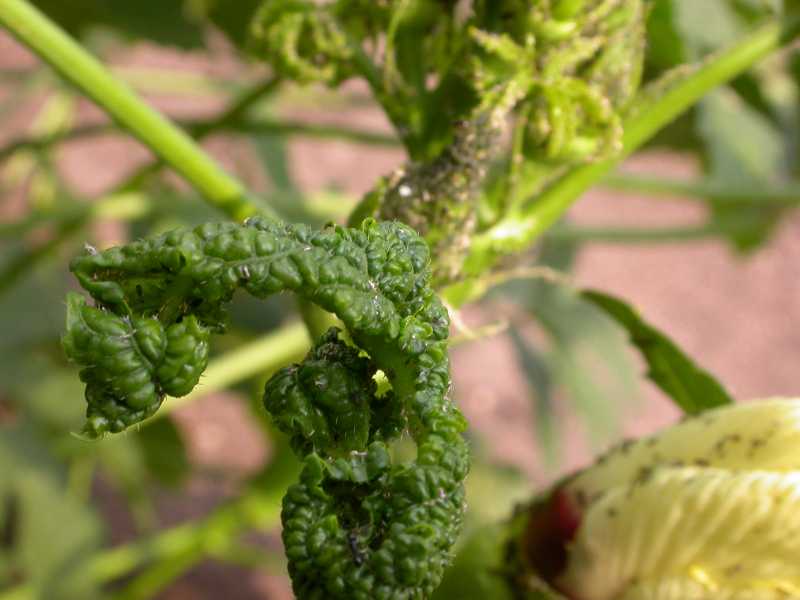 |
| Puckered, distorted foliage on okra (Abelmoschus esculentus 'Annie Oakley' II) caused by feeding damage from aphids (Hemiptera) |
|
 |
| Aphids (Hemiptera) with ants (Hymenoptera) tending them on an okra flower (Abelmoschus esculentus 'Annie Oakley' II) |
|
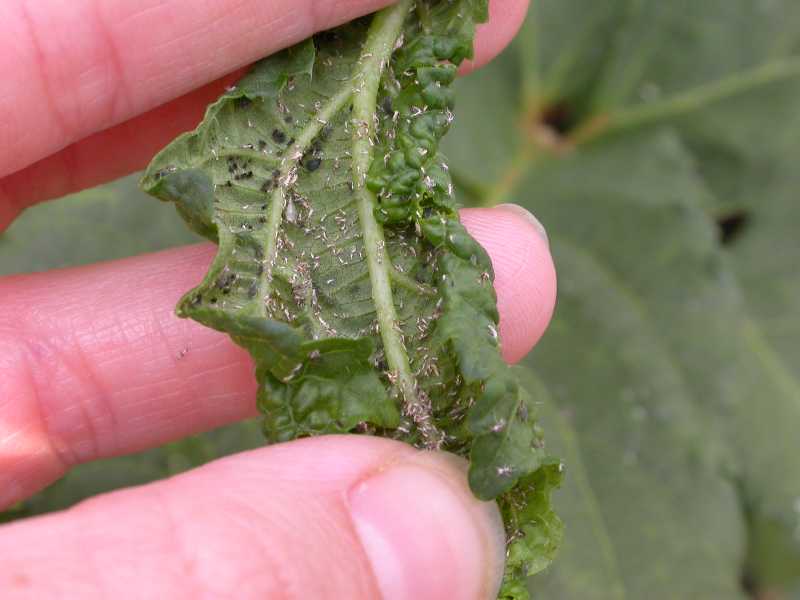 |
| Curled okra leaf (Abelmoschus esculentus 'Annie Oakley' II) opened to reveal aphids and their cast skins (Hemiptera) |
|
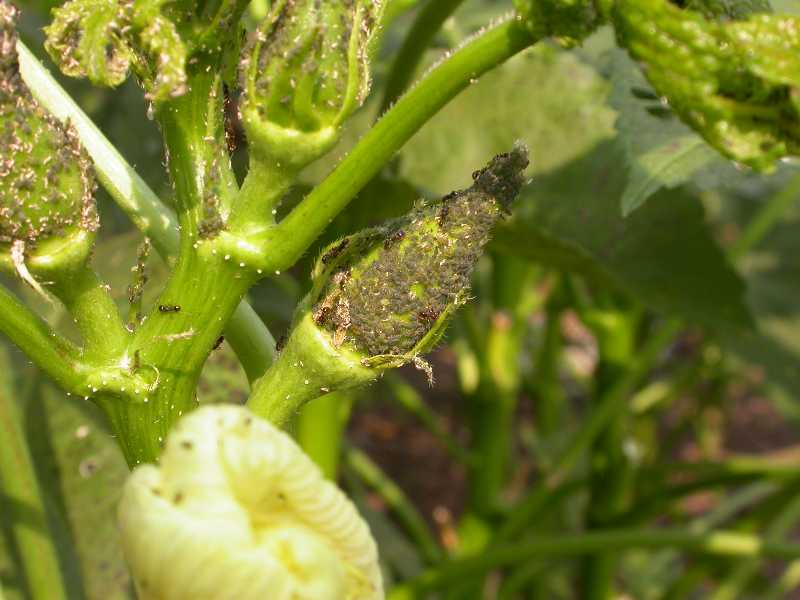 |
| Flower bud of okra (Abelmoschus esculentus 'Annie Oakley' II) covered with aphids (Hemiptera) and tended by ants (Hymenoptera) |
|
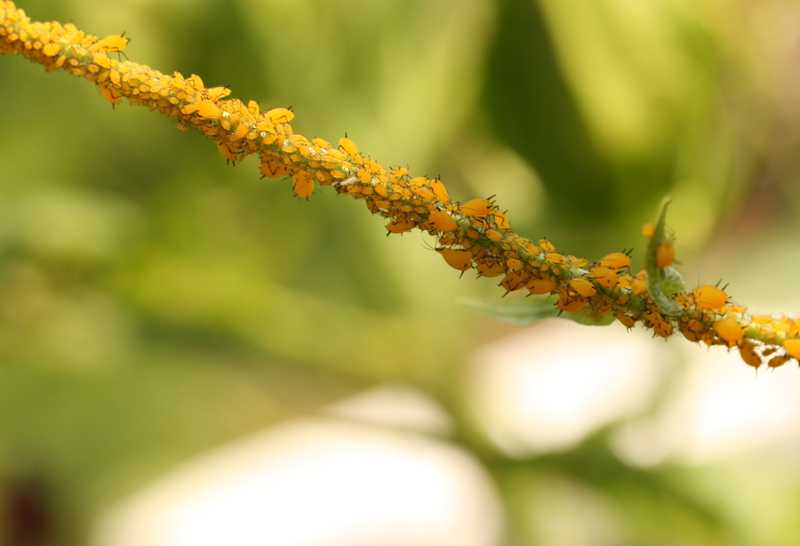 |
| Aphids on honeyvine milkweed stem (Asclepias); note, black cornicles |
|
 |
| Heavy aphid infestation (Hemiptera) on underside of cup plant leaf (Silphium perfoliatum). Natural control is nearby: a lady beetle larva (Coleoptera) |
|
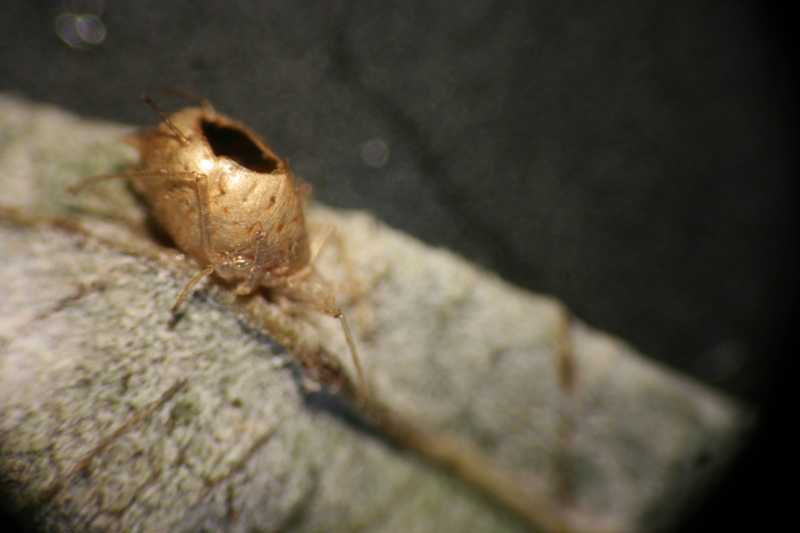 |
| Parasitized aphid (Hemiptera); note, exit hole |
|
 |
| Woolly apple aphids (Hemiptera) on hawthorn (Crataegus) with death lurking over head--egg of predaceous green lacewing (Neuroptera) |
|
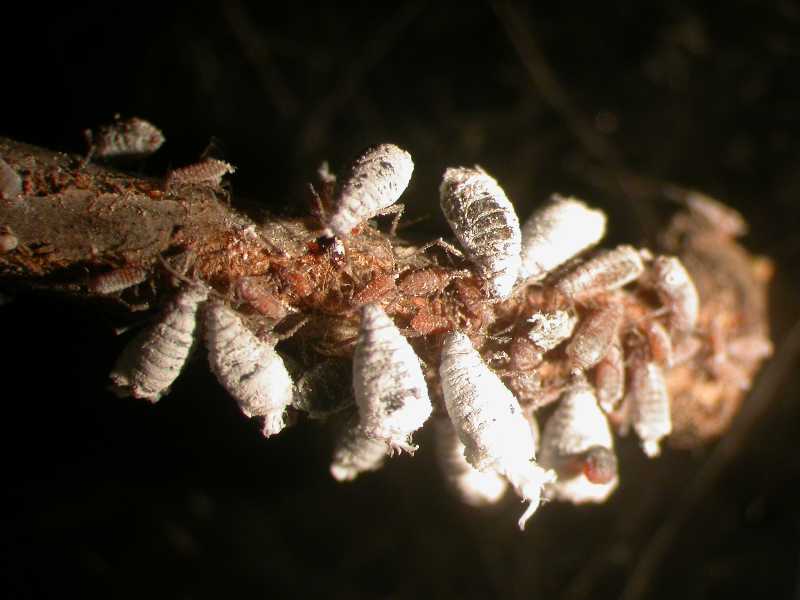 |
| Woolly apple aphids (Hemiptera) on hawthorn (Crataegus) |
|
 |
| Aphids (Hemiptera) on underside of leaf including nymphs in various stages of maturity and white cast skins |
|
 |
| Close-up of aphids (Hemiptera) on underside of leaf including nymphs in various stages of maturity and white cast skins |
|
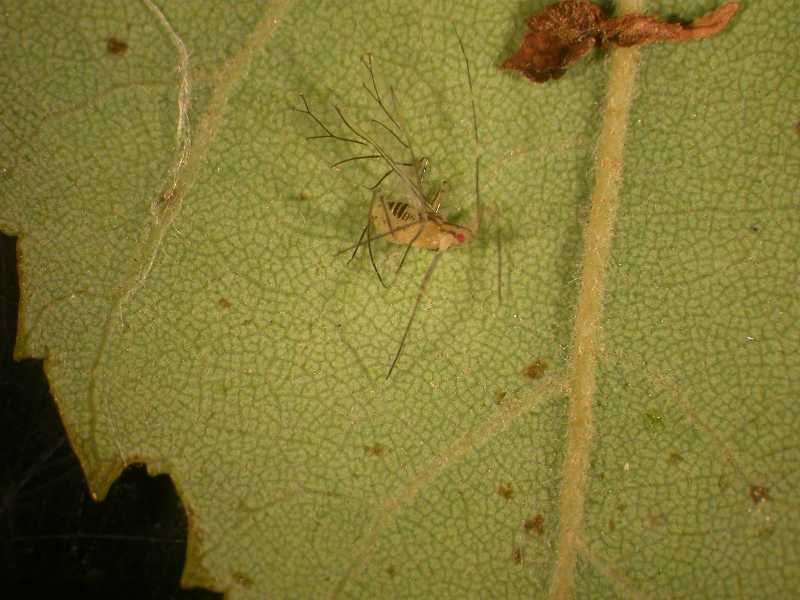 |
| Adult aphid (Hemiptera) on birch leaf (Betula); note clear wings and red eyes |
|
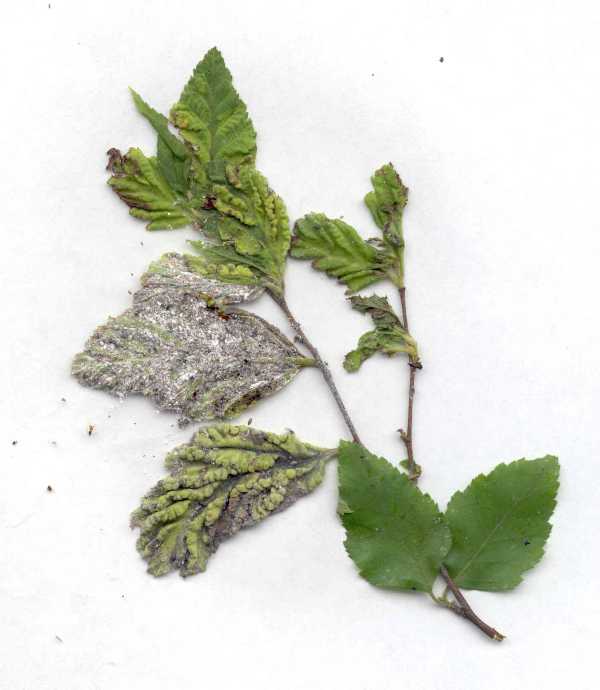 |
| The upper surface of some leaves on this river birch (Betula nigra) look puckered and distorted because of the aphids (Hemiptera) feeding on the underside |
|
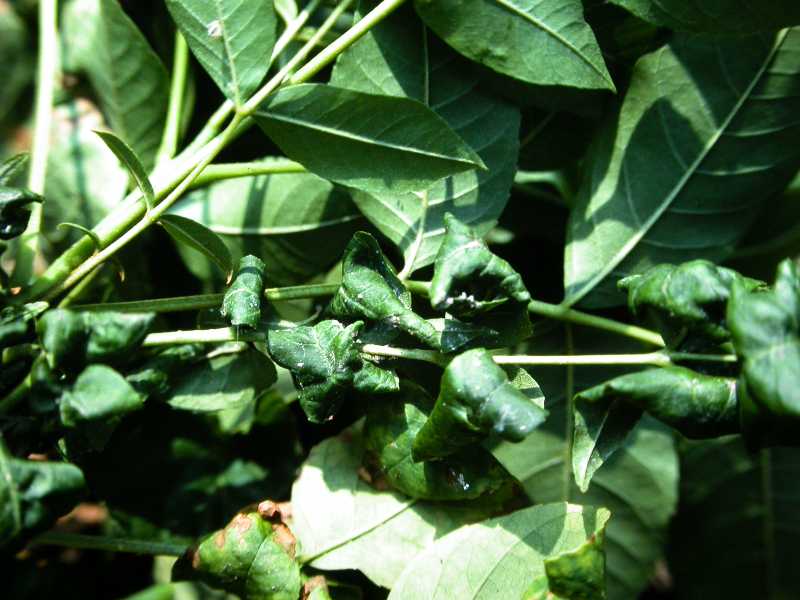 |
| Aphids (Hemiptera) caused the puckering, curled and rolled leaflets on this white ash (Fraxinus americana) |
|
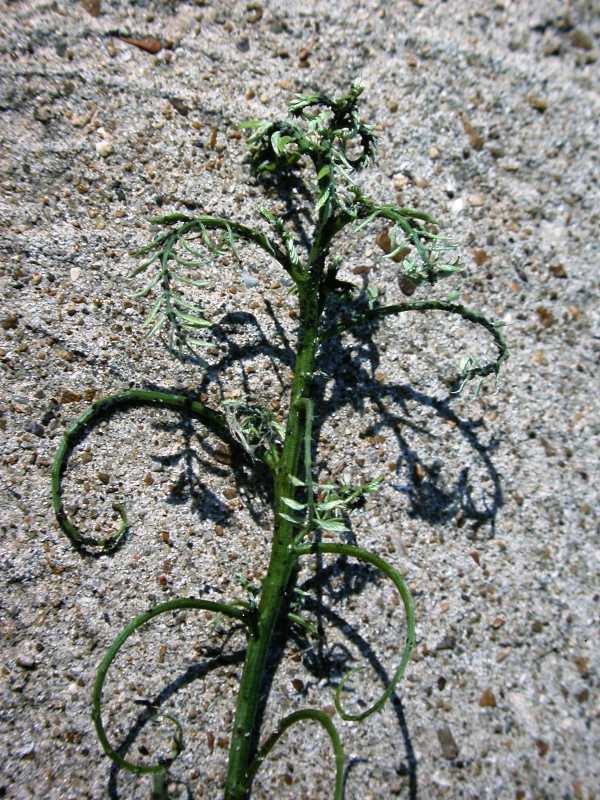 |
| Aphids can cause extreme curling as on this black locust shoot (Robinia) |
|
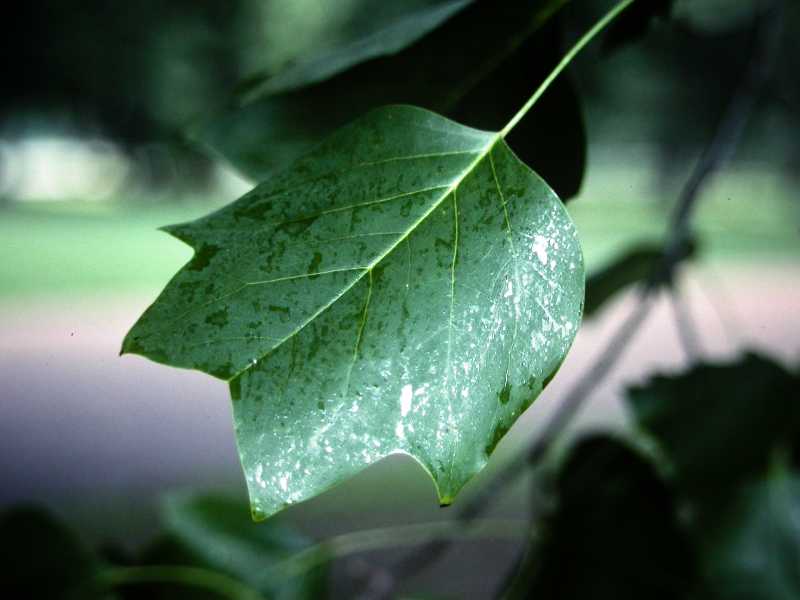 |
| The leaf of this tulip tree (Liriodendron) is shiny and sticky from honeydew, the excrement of certain piercing sucking insects (Hemiptera), in this case, aphids |
|
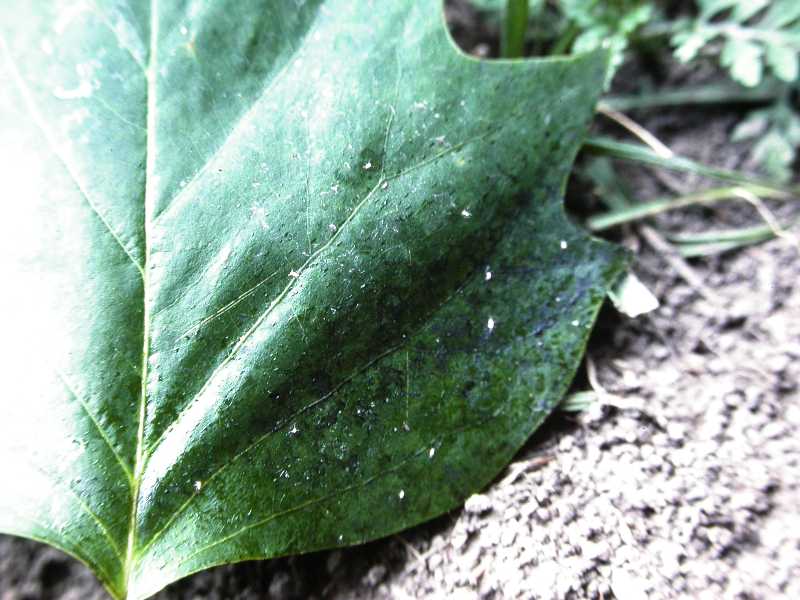 |
| Aphids excrete honeydew as they feed and in turn sooty mold sometimes feeds on the honeydew, as on this tulip tree leaf (Liriodendron) |
|
 |
| Feeding by aphids (Hemiptera) can produce distorted foliage like the witches' broom on this honeysuckle (Lonicera) |
|
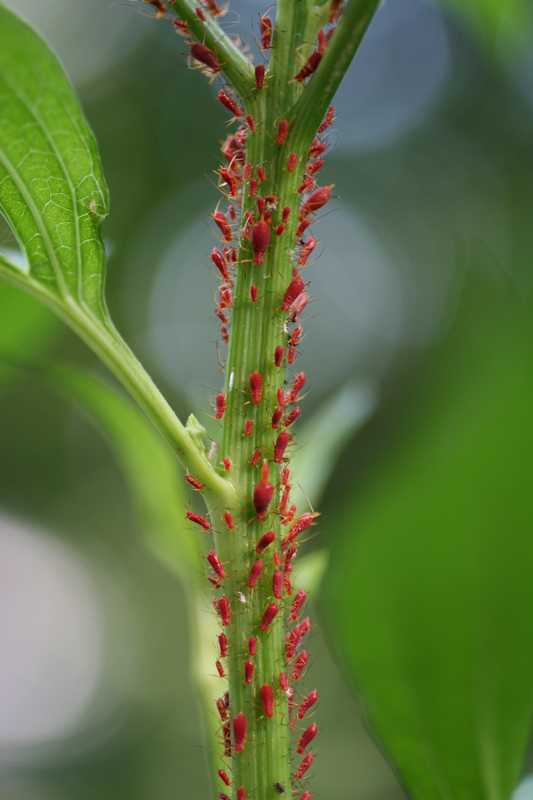 |
| Aphids (Hemiptera) come in many colors; sometimes they blend into the background and are difficult to see; other times, they stand out, as do these red aphids |
|
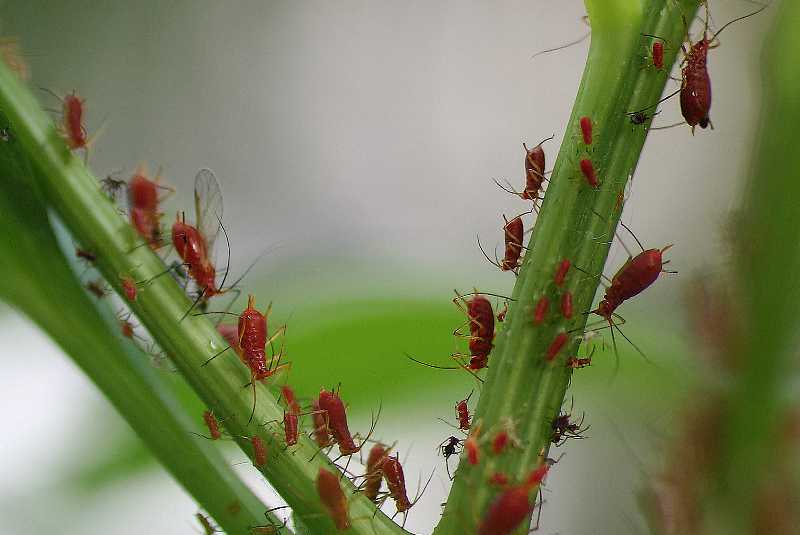 |
| Red aphids (Hemiptera), including winged adult and nymphs in various stages; note, antennae and cornicles |
|
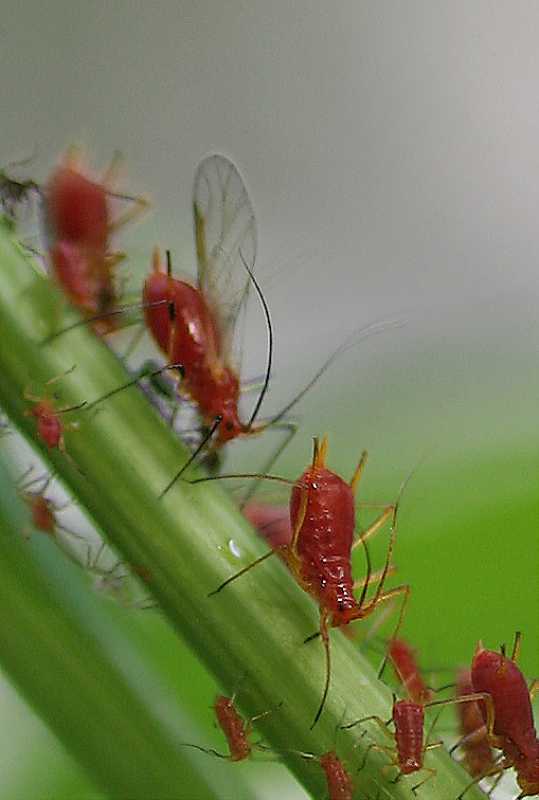 |
| Winged aphid and nymphs (Hemiptera) in various stages |
|
 |
| The distorted foliage on this mint (Mentha) was caused by the feeding of aphids (Hemiptera) |
|
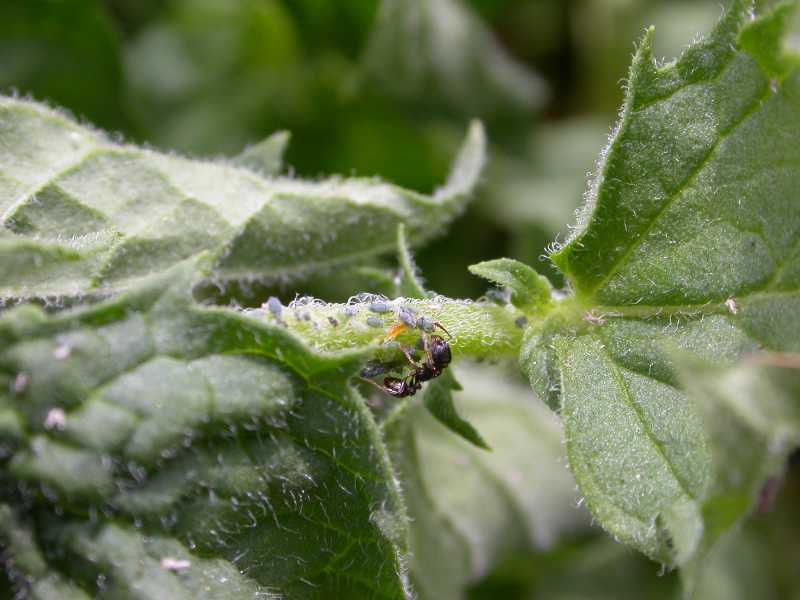 |
| Ants (Hymenoptera) protecting aphids (Hemiptera) on this mint plant (Mentha) |
|
 |
| Aphids (Hemiptera) being tended by ants (Hymenoptera) on mint (Mentha) |
|
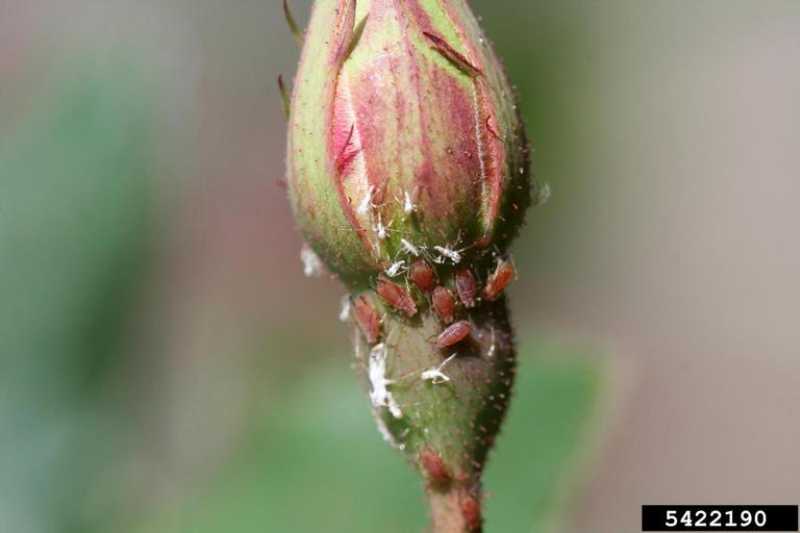 |
Aphids (Hemiptera) on a rose bud. W. Cranshaw, CSU, Bugwood.org
|
|